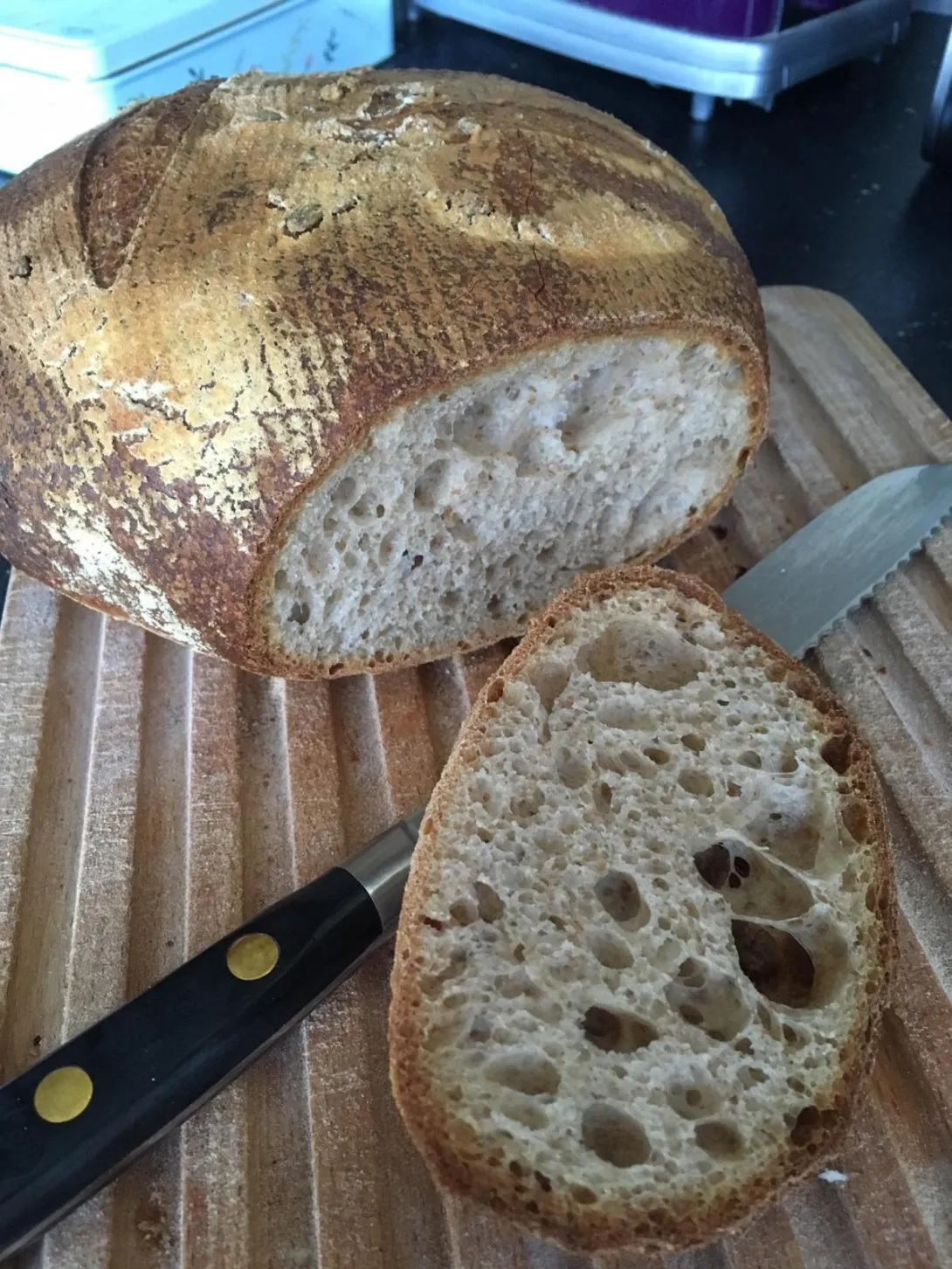
I just can't make it happen!!
Everything else is perfect, shape, taste, texture, rise in the oven even.
I slash it, spray it, have extra steam in the oven, it rises and cooks beautifully but the slashes just don't 'open'.
Maybe I should just be happy with my delicious loaf of sourdough - and I am! - but even so it would be nice to know what causes the crust to crack open.
It's cooked in a fan assisted domestic oven, first heated to max +250C then reduce to 200C when I put it in.
Have you tried turning off the fan assist to see if your results are different? If you are unable to turn off the fan assist, try cooking the bread in a cover vessel.
Your bread is very nice...
Dan
I will try it without the fan. I have the option of top and bottom or bottom only element - which would you suggest. If I use the top and bottom I find that the bread gets too brown on top, that's why I tend to use the fan to create an even heat.
I have used an iron casserole but it is so big and heavy and deep. Hopefully Mr Claus may deliver a cloche soon ;)
Best advice is to try different heating elements. I wished I had a top and bottom element. The Rofco bread ovens use top and bottom heat.
Dan
1: Getting the ferment right - Well it looks perfectly done to me judging by the crumb.
2: Shaping - You say it's done perfectly but are you getting it taut enough? That I can't tell from a photo.
3: Proofing - Getting the loaf to rise well and the crust to crack depends a lot on the proofing. Proofing slightly under will give you a more "explosive" oven rise. You don't want to proof till double. An all white bread should be around 90% and the more wholegrain in the dough you'll want less. Your dough might have been proofed to an extent that it wouldn't rise too much (but not necessarily over proofed so it collapses).
4: Steam - even with all your efforts for steam the fan is too efficient and the bread crusts over too quickly. I'm inclined to agree with Dan and think you should look into this. Have you tried baking in a Dutch Oven or equivalent?
By shape I meant the finished product being round etc. But the answer is yes I do think I get the 'skin' taught enough, I go round and pull quite a few times.
I proof it in the fridge overnight. I don't think it doubles but it's hard to tell.
Cracking crust is very typical of rye breads. Try switching out 5% to 10% of the flour with fine rye flour. :)
Try bulk proofing less and a shorter final proof.
I did not realize that. Thanks for the tip.
Right I will bear that in mind but I do like my SD to be quite white...
Great looking loaf!
Your crust is setting before the bread quits blooming. Try to get more steam. Maybe misting the dough with water before baking.
I'm only going to mirror what a few others have said, but looking at the cross section which is sort of oblong rather than flat on the bottom and round on top, it suggests that your boule had a bit more oven spring to give when the crust solidified. Your crumb is nice though, so your proof was probably good. A fan assisted oven may dry the crust more quickly than an oven without. I would try covering it for the first half of the bake like others have suggested to trap in the steam produced.
You might also consider experimenting with the length, depth and angle of your slash to achieve a more open grigne. The slashes in the original photo look quite short. Try longer slightly deeper ones that go in at more of a 45° angle.
Hope this is helpful! I look forward to seeing the results in your next load!